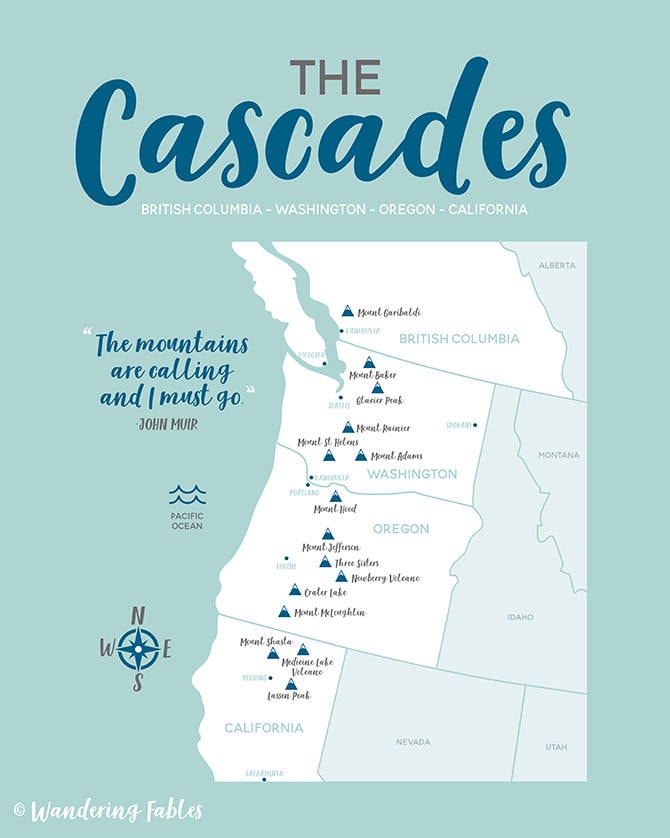

MOUNTAIN RANGE MAP PNW CANADA CASCADEA UPDATE
HIGH: Mount Adams.ĭownload the 2018 update to the U.S. Very High Threat: Crater Lake, Glacier Peak, Mount Baker, Mount Hood, Mount Rainier, Mount St. Based upon eruption history and distance to population centers, a 2018 volcanic threat assessment designated nine volcanoes in Washington and Oregon with a "high" or "very high" rating. Volcanic threat is the combination of hazards (the dangerous or destructive natural phenomena produced by a volcano) and exposure (the people and property at risk from the volcanic phenomena). National volcanic threat assessment identifies risks to populated areas. To learn more, read about volcanic hazards on this website. Eruptions that include volcanic ash can be especially dangerous for aircraft, even at long distances from the volcano, because volcanic ash can clog and shut down their engines. The principal hazards to people in the Pacific Northwest are from lahars and ash fall. Lahars(volcanic mudflows) can destroy buildings and infrastructure. Known for its snow-capped peaks, vast glaciers, rocky scree slopes, and dense forests, the Cascade Range is a major collection of mountains located in the.

Population growth means increase in risk.Īs population increases in the Pacific Northwest, areas near the volcanoes are becoming developed and more people and property are at risk.

It includes famous peaks like Mount Rainier, Mount Adams, Mount St. Mount Hood– 1781, eruption, lahar flows to Columbia River The Cascade Mountain range stretches across Oregon and Washington.Helens– 1980, catastrophic collapse/eruption, 2004-04, lava eruption Mount Baker– 1843, steam blast, ash fall, debris avalanche.Some of those eruptions would have caused considerable property damage, economic disruption, and loss of life if they had occurred today without warning: Seven Cascade volcanoes have erupted since the beginning of the eighteenth century. Locate the volcano closest to you by visiting the map on our home page. Helens vividly demonstrate the power and impacts that Cascade volcanoes can unleash when they do erupt.ĭuring the past 4,000 years, periods of eruptive activity at various Cascade volcanoes have lasted for a few to tens of years per century. The time between eruptions is usually measured in decades or centuries, so eruptions are not a part of our everyday experience. USGS GIP 63 (Public domain.) Cascade volcanoes have erupted in the recent past and will erupt again. Cascade Range Volcanoes (Public domain.) The familiar snow-clad peaks of the Cascade Range are part of a 1,300 km (800 mi) chain of volcanoes, which extends from northern California to southern British Columbia. Cascadia assumes the shape of a curved land that runs across the Pacific Ocean, Rocky Mountains, and. The bioregion covers over 530,000 square miles of land water and sea area would considerably increase the area. Visit Media to see details.Įruptions in the Cascade Range during the past 4000 years. Cascadia comprises of states of Oregon, Washington, British Columbia, Montana, Idaho, and Southeast Alaska.


 0 kommentar(er)
0 kommentar(er)
